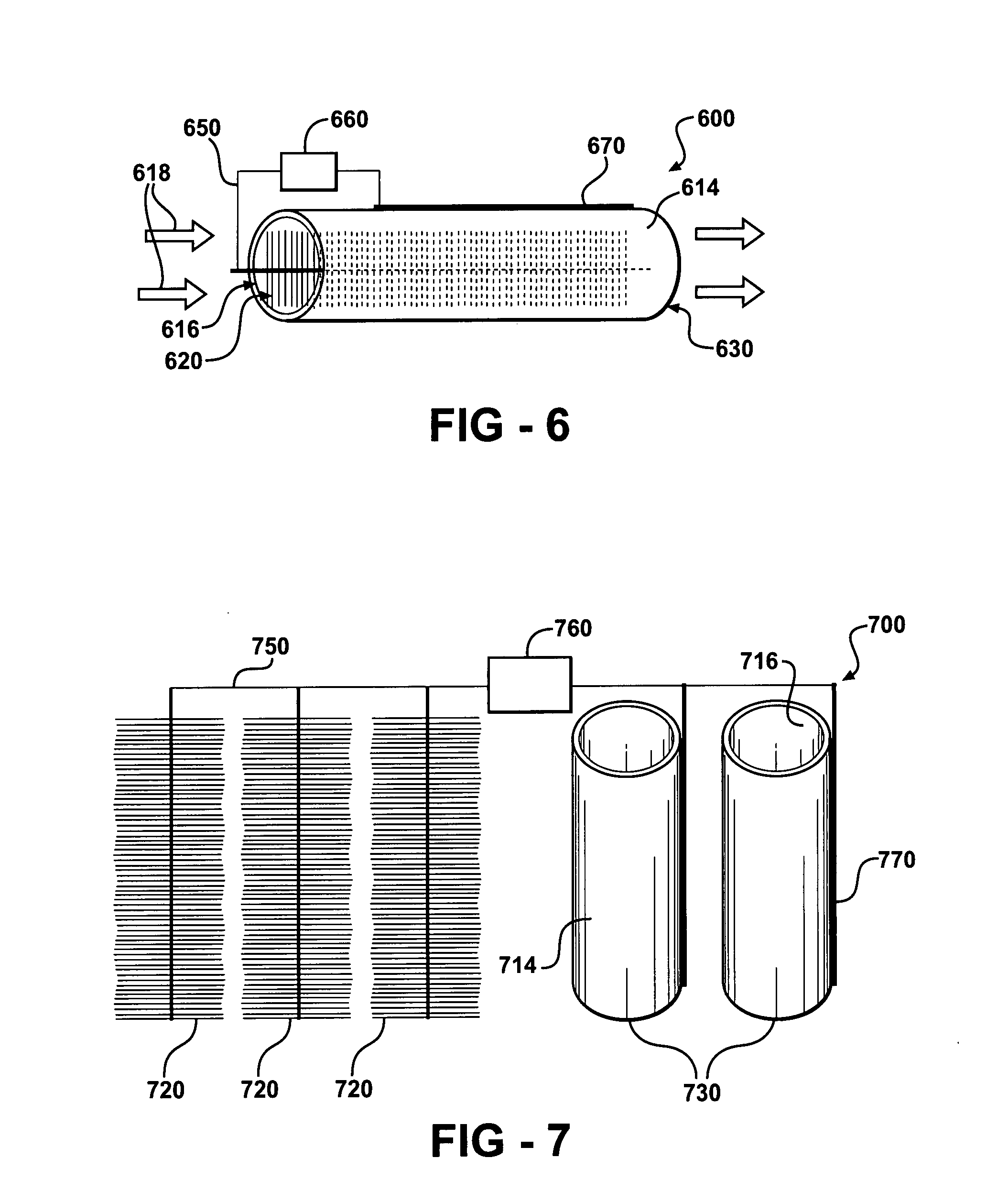Materials and configurations for scalable microbial fuel cells
a technology configurations, applied in cell components, electrochemical generators, energy based wastewater treatment, etc., can solve the problems of limiting power production in the electrode configuration of microbial fuel cells, and achieve the effect of enhancing potential
- Summary
- Abstract
- Description
- Claims
- Application Information
AI Technical Summary
Benefits of technology
Problems solved by technology
Method used
Image
Examples
example 1
[0170]Electrode Materials.
[0171]In this example brush anodes are made of carbon fibers (PANEX®33 160K, ZOLTEK) cut to a set length and wound using an industrial brush manufacturing system into a twisted core consisting of two titanium wires. Two brush sizes are used in this example: a small brush 2.5 cm in outer diameter and 2.5 cm in length; and a larger brush 5 cm in diameter and 7 cm in length. Based on mass of fibers used in a single brush, and an average fiber diameter of 7.2 microns, these anodes are estimated to have a surface area of 0.22 m2 or 18,200 m2 / m3-brush volume for the small brush (95% porosity), and 1.06 m2 or 7170 m2 / m3-brush volume for the larger brush (98% porosity). Except as noted, brush anodes are treated using ammonia gas as described in Cheng, S.; Logan, B. E. Ammonia treatment of carbon cloth anodes to enhance power generation of microbial fuel cells. Electrochem. Commun. 2007, 9, 492-496. Briefly described, ammonia gas treatment of an anode is accomplishe...
example 2
[0192]Cathode Preparation
[0193]An ultrafiltration hydrophilic tubular membrane (a polysulfone membrane on a composite polyester carrier) with an inner diameter of 14.4 mm (B0125, X-FLOW) and wall thickness of 0.6 mm is used as the tube-cathode. The tubes are cut to a length of 3, 6 or 12 cm (equal to a surface area of 13.5, 27 and 54 cm2) and then are coated with two coats of a commercially available graphite paint, ELC E34 Semi-Colloidal, Superior Graphite Co. Co-tetra-methyl phenylporphyrin (CoTMPP) is used as the cathode catalyst unless indicated otherwise. A CoTMPP / carbon mixture (20% COTMPP) is prepared as described in Cheng, S. et al., Environ. Sci. Technol. 2006, 40, 364-369, and mixed with a 5% Nafion solution to form a paste using 7 microliters of Nafion per mg of CoTMPP / C catalyst. The paste is then applied to the air-facing surfaces of all tube-cathodes to achieve ˜0.5 mg / cm2 CoTMPP loading. In some tests a commercial carbon paper cathode containing Pt, 0.35 mg / cm2 of Pt ...
PUM
 Login to View More
Login to View More Abstract
Description
Claims
Application Information
 Login to View More
Login to View More - R&D
- Intellectual Property
- Life Sciences
- Materials
- Tech Scout
- Unparalleled Data Quality
- Higher Quality Content
- 60% Fewer Hallucinations
Browse by: Latest US Patents, China's latest patents, Technical Efficacy Thesaurus, Application Domain, Technology Topic, Popular Technical Reports.
© 2025 PatSnap. All rights reserved.Legal|Privacy policy|Modern Slavery Act Transparency Statement|Sitemap|About US| Contact US: help@patsnap.com



